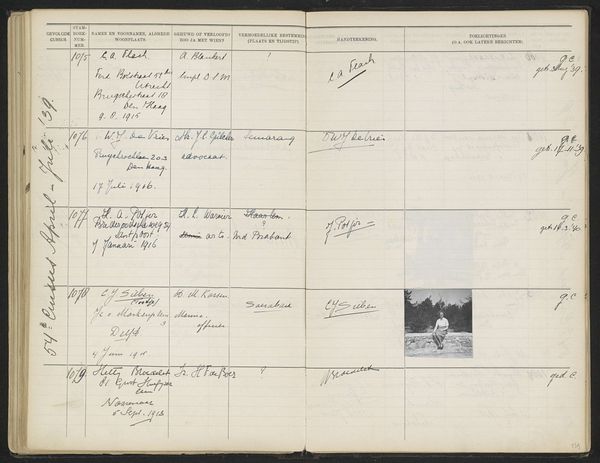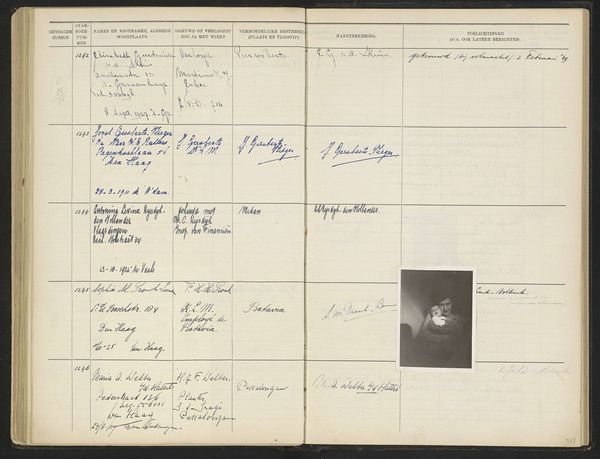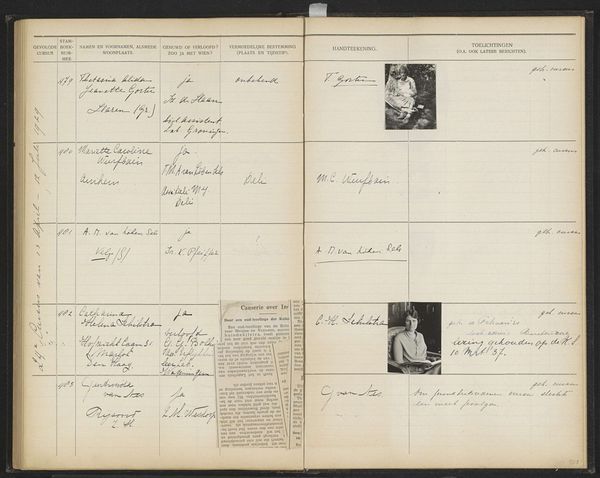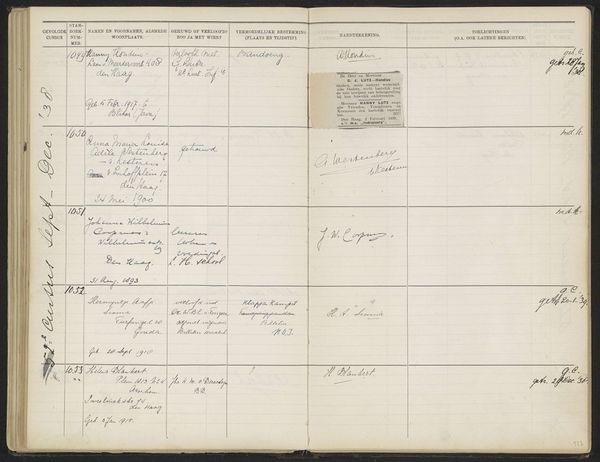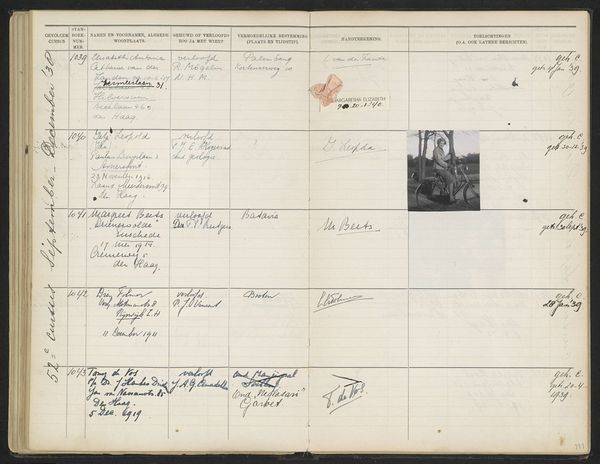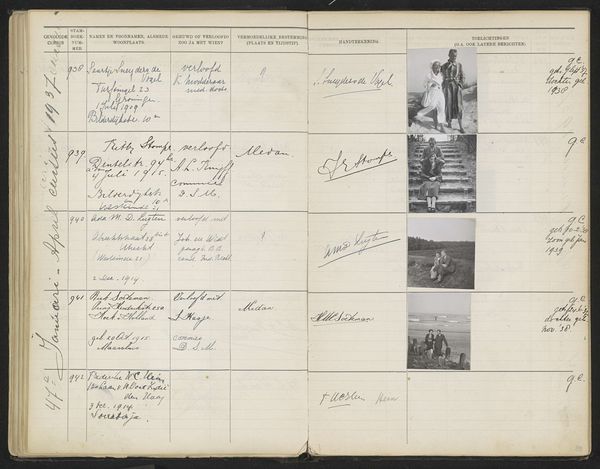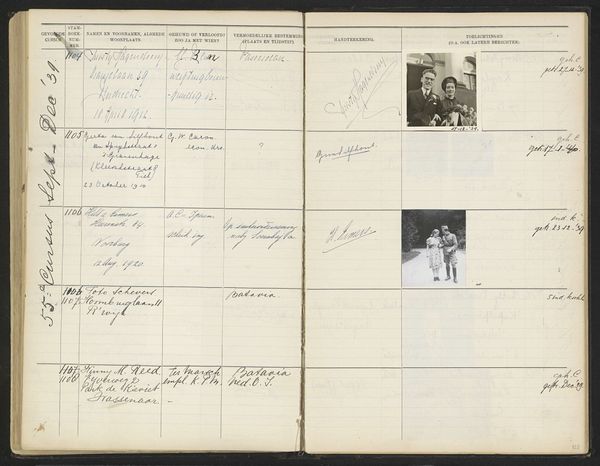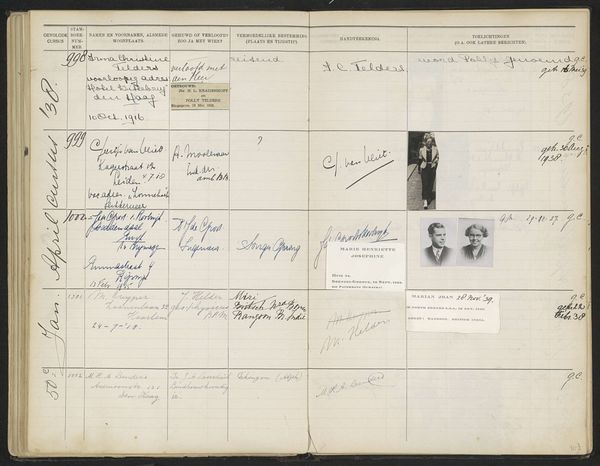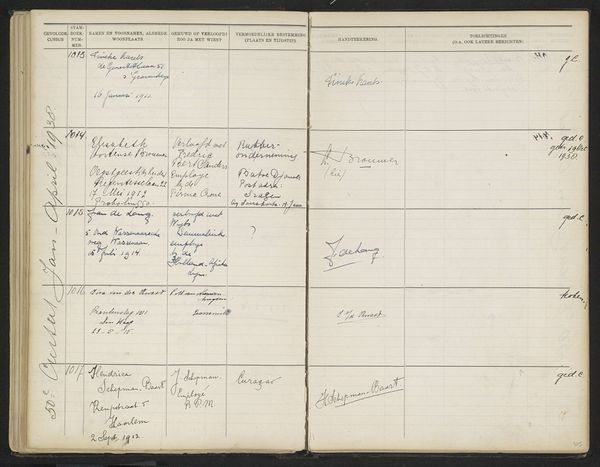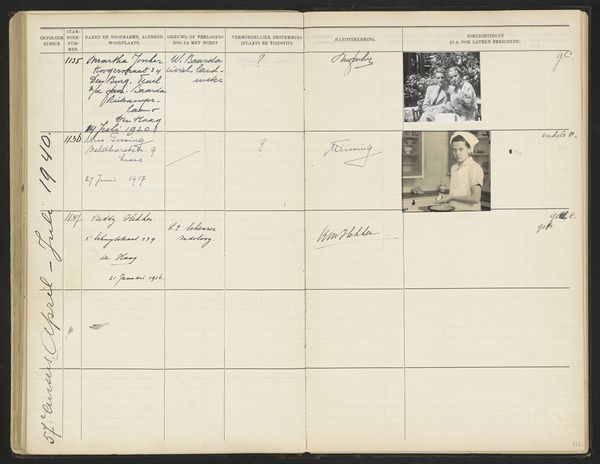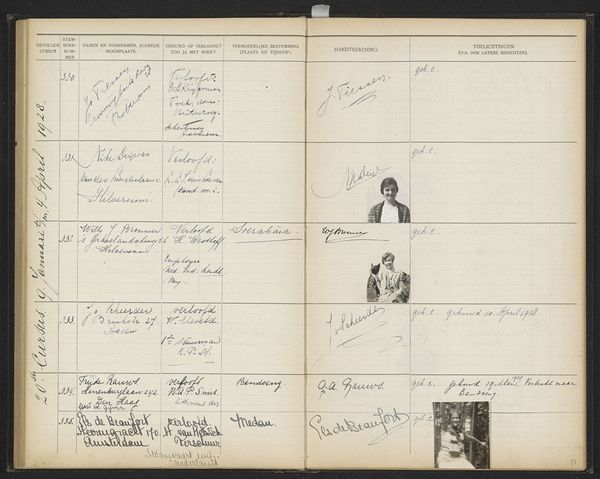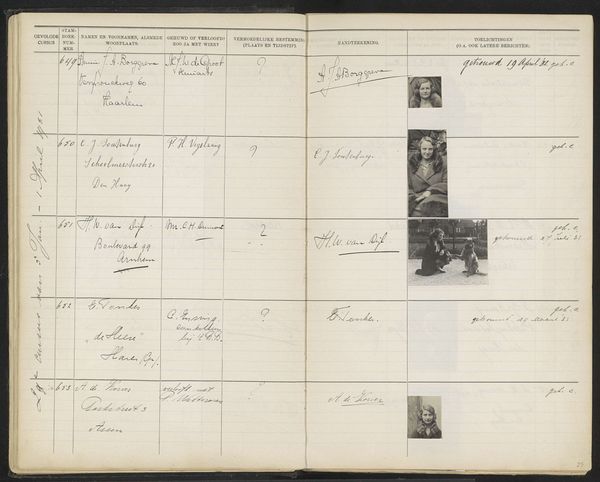
Blad 120 uit Stamboek van de leerlingen der Koloniale School voor Meisjes en Vrouwen te 's-Gravenhage deel II (1930-1949) Possibly 1939
0:00
0:00
drawing, paper, photography
#
portrait
#
drawing
#
aged paper
#
sketch book
#
hand drawn type
#
paper
#
photography
#
personal sketchbook
#
hand-drawn typeface
#
ink colored
#
pen work
#
sketchbook drawing
#
genre-painting
#
storyboard and sketchbook work
#
sketchbook art
#
realism
Dimensions: height 337 mm, width 435 mm
Copyright: Rijks Museum: Open Domain
Curator: The artifact before us is "Blad 120 uit Stamboek van de leerlingen der Koloniale School voor Meisjes en Vrouwen te 's-Gravenhage deel II (1930-1949)", quite a mouthful. It's essentially a page from a register, probably dating around 1939, given the handwritten date on the side. We see handwritten entries, signatures, and even a pasted-in photograph. It seems to be rendered primarily with ink on paper. Editor: It evokes a feeling of constraint, almost archival dread. All those neatly ruled lines… but then, that little photograph offers a tiny escape, doesn’t it? Curator: Indeed. The material production here speaks volumes. Look at the precise penmanship, the columned layout-- clear evidence of the administrative labor inherent in running such a colonial school. We can analyze the quality of paper, the ink, the photographic processes to unpack the technologies and resources that facilitated colonial education at the time. Editor: Agreed, but who were these women being processed and documented? The register implies a social context ripe with unequal power dynamics. Colonial schools often played a role in assimilation or training native populations to serve colonial interests. Each name, each entry signifies an individual entangled in a larger political project of domination, I am curious about the absences and erasures in these types of archives. Who is not included here and why? Curator: And the photograph could be considered further evidence. Are those students? What narratives do their bodies convey as labor material in maintaining colonial administrative institutions. It is possible they produced similar documents with regimented rows. Editor: Absolutely. The presence of handwriting, too, offers a curious mix of individual agency within those structural constraints. The flourishes of a signature are an imprint of the individual within the system. Each entry suggests a complex weave of control and individuality. What does their inclusion and placement in this registry suggest about them, their relationship to the school, their relationship to colonizer, etc.? Curator: Precisely! Examining the medium reveals the intersection of various forces. The hand-drawn typeface itself conveys intent in these forms and can suggest what social forces drove this style of inscription during this specific period. Editor: It’s a poignant snapshot—or a carefully constructed page, rather—of a bygone era and its legacies. This page prompts us to reflect critically on the historical contexts shaping knowledge production. Curator: Right, a crucial reminder that these seemingly neutral documents are loaded with biases and power dynamics that warrant continued attention and revision.
Comments
No comments
Be the first to comment and join the conversation on the ultimate creative platform.
